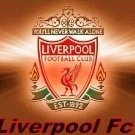Latest On Liquid Restrictions At Bkk Airport?
-
Recently Browsing 0 members
- No registered users viewing this page.
-
Topics
-
-
Popular Contributors
-
-
Latest posts...
-
38
Finance Thailand Tightens Mobile Banking to Curb Scams
Been there, done that. Next... -
45
Report Thailand to Mandate Tax Declarations for All Citizens by 2027
Based on several people I know here, they aren't quite at the enforcement stage yet. -
15
Formication?
When I was stationed in the gulf in 1970, a friend of mine started to suffer from the sensation of having insects all over him. He went along to sick quarters and the medic said it was salt deprivation. A couple of salt tablets and he was ok. I know it is not the only cause but worth considering. -
13
Crime Man Thought to Be British Accused of Car Theft Attempt in Phuket
Trow da bum out and ban from the Kingdom for life. -
5
Thai - Cambodia Conflict Hun Sen Threatens Arrest of Thai Leaders Amid Border Dispute
The shins stray across the border accidentally and get arrested and placed in prison that’s music to my ears -
80
-
-
Popular in The Pub







.thumb.jpg.bc523c85a8d558dbc282dca7a2e602c9.jpg)


Recommended Posts
Create an account or sign in to comment
You need to be a member in order to leave a comment
Create an account
Sign up for a new account in our community. It's easy!
Register a new accountSign in
Already have an account? Sign in here.
Sign In Now